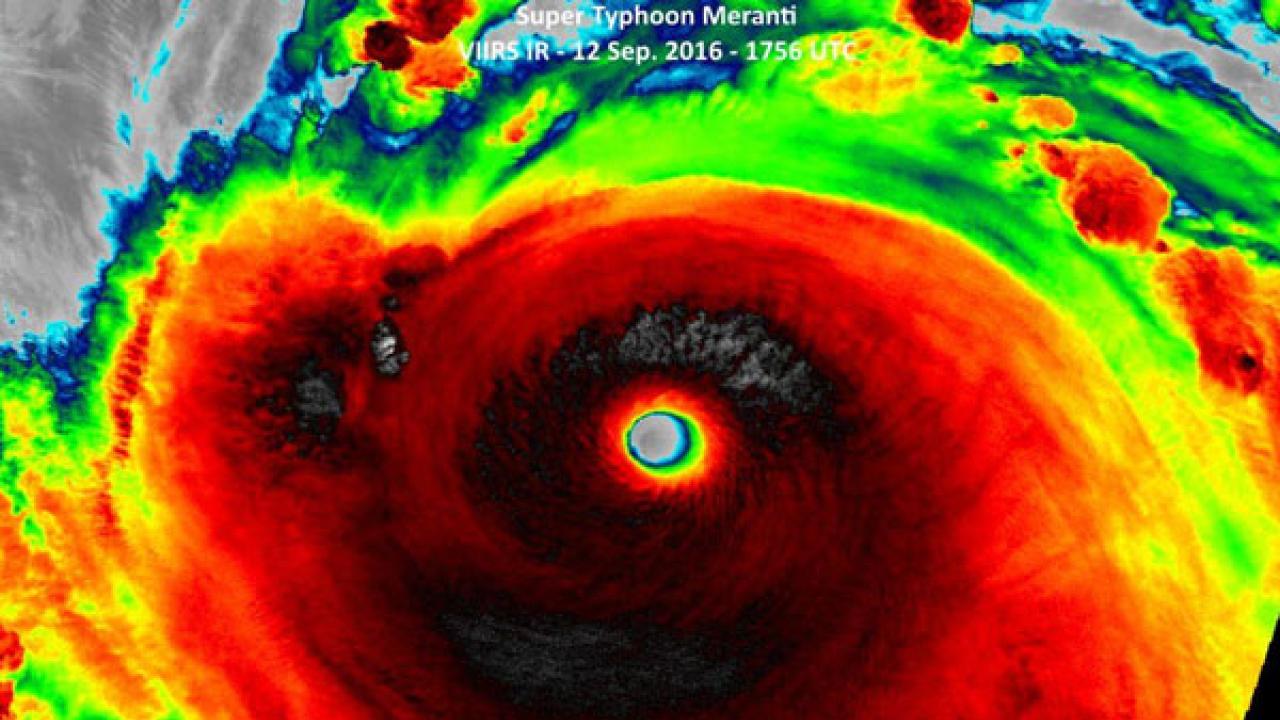
"Eureka!" might be what cartoon scientists shout, but throughout the history of science, a muttered "that's funny" often proves more interesting. It definitely was in this case, when ICTP Associate Cheng Sun noticed an intriguing correlation, and started investigating it in collaboration with ICTP climatologist Fred Kucharski while visiting ICTP. Their findings, published in Nature Communications last week, reveal a strong connection between decades-long climate patterns in the Atlantic Ocean and sea surface temperatures in the Western Tropical Pacific.
Earth's oceans are huge, with many cycles that affect everything from day-to-day weather to climate patterns that unfold over multiple decades. Climatologists examine all of these patterns in the temperature and movement (among other things) of water and air, over several scales in time and space. One of these is known as the Atlantic Multidecadal Oscillation, the official name for a tiny, cyclical shift in average sea surface temperatures over the Atlantic that occurs very slowly, over sixty to eighty years.
The Atlantic Multidecadal Oscillation (AMO) is calculated to remove any linear temperature change, i.e. sea surface temperature changes driven by climate change. The AMO measurements are separated out from the trend of human-caused rising temperatures, in order to examine the long-term natural patterns in sea surface temperatures. The AMO goes through cool phases and warm phases, but even at the extreme of the cycle the difference in temperature is not more than 1 degree Centigrade. Even this small change is associated with changes in local weather patterns: a warm phase of the AMO has been connected with greater rainfall over Florida, Northeastern Brazil, and Northern Africa. North American severe droughts, like the one that stretched through the 1930s, has also been connected to the AMO pattern, as has snowfall in Europe and the frequency of hurricanes in the Caribbean. Climatologists are gradually uncovering how strong of a pacemaker, or influencing factor, the AMO is for many areas.
But few scientists would have guessed that that influence extends to the Western Tropical Pacific (WTP). This region of the Pacific is a key heat and moisture source for many regions because of its high sea surface temperature. That sea surface temperature varies over multiple decades, in a curve that looked familiar to Sun.
"The first day that he was at ICTP, Cheng came to my office and showed me how similar the sea surface temperature graph was to the AMO graph," remembers Kucharski. Teleconnections, or influences on climate patterns from distant regions of the globe, are a key feature of Earth's complicated climate, but they are not often that distant, and rarely strong. Sun and the rest of the co-authors dove into this observation, using a suite of models to show that the decadal variability in the Western Pacific was indeed driven by the AMO. "It was very surprising," says Sun. "I didn't expect the oceans to be so connected. I wanted to know, what could be the mechanism for this interbasin connection?"
"One of the things I'm most proud of about this work is that the model we used to pinpoint every single step of how this happens is an ICTP model," says Kucharski. Called SPEEDY, it is an intermediate complexity, but fast and easy-to-use climate model that was crafted and refined at ICTP. The basic mechanism it revealed is based on basic physics: the warm air over the warmer sea surface temperatures in the Atlantic rises. Thanks to a chain reaction of weakening and strengthening pressure systems around the globe, most of that warm air descends again over the Subtropical North Pacific, raising the sea surface temperatures there which subsequently also warms up the Western Pacific through further feedback mechanisms.
The complexities of the Western Pacific have been investigated before, often by climatologists looking at what influence the Eastern Tropical Pacific could have, believing it could be an important pacemaker. Few researchers have looked this far afield for influences, and no one expected the connection to the AMO to be this strong. "In climate research you have lots of noise in the data," Kucharski explains, "so a strong correlation is usually considered to be 0.6. This connection between the AMO and Western Pacific is 0.8, 0.9." Because this surprise teleconnection is so strong, "if we want to know about Western Pacific climate variability, we have to focus more on the AMO," says Sun.
The next steps for Sun and Kucharski involve exploring the impact of this connection. Typhoon and cyclone frequencies could also be influenced by the AMO phasing. This attribution to the AMO is a growing focus in the field of climatology, Kucharski explains; it's emerging as a strong global climate pacemaker. This paper exposes just how global the AMO's reach is. "The mechanism is not surprising, actually," says Sun. "What was surprising was that the Atlantic is such a strong pacemaker of Western Pacific variability."
Sun, C., Kucharski, F., Li, J., Jin, F., Kang, I., & Ding, R. (2017). Western tropical Pacific multidecadal variability forced by the Atlantic multidecadal oscillation. Nature Communications, 8, 15998. doi:10.1038/ncomms15998
---- Kelsey Calhoun
















